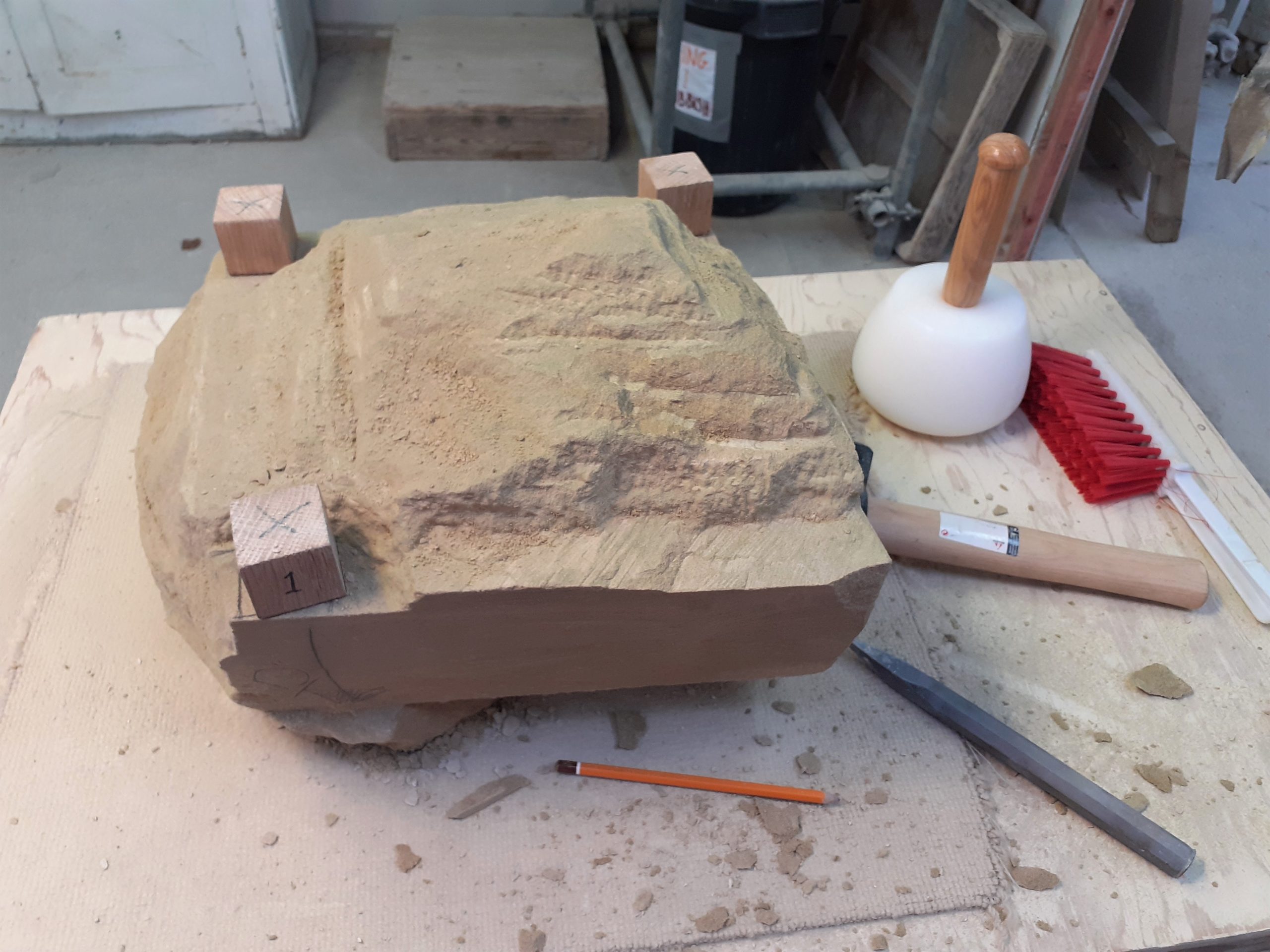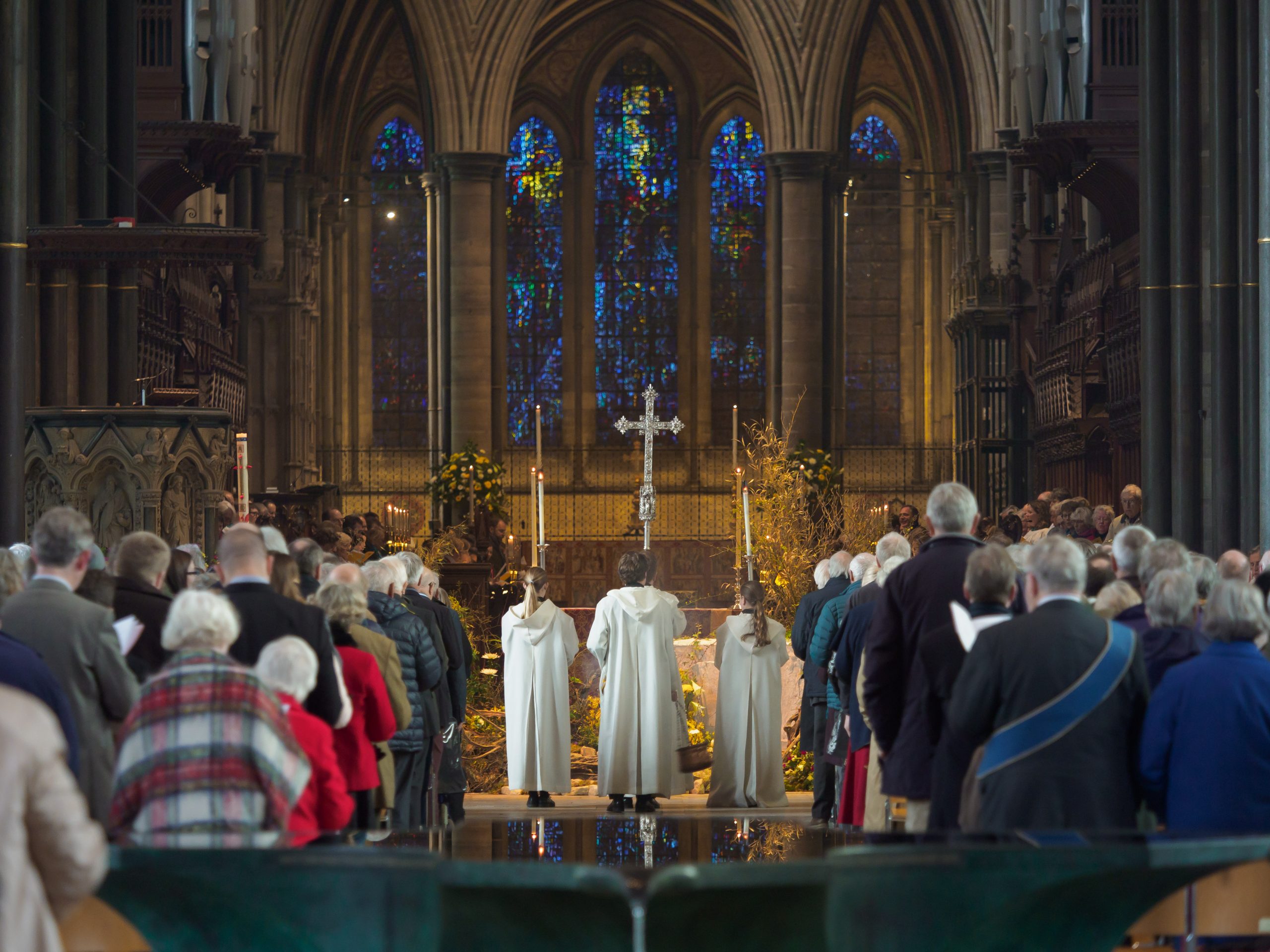Stonemason Apprentice Blog: March 2022

Hello and welcome to this month’s blog post. My name is Joe and I’m the apprentice stonemason at Salisbury Cathedral. Today I’d like to tell you about the first challenge that awaits all apprentice masons: “boning-in” a stone.
There is a phrase that I have often heard our Clerk of Works say when showing visitors around our workshop: “all masonry is a combination of flat surfaces and chamfers.” Some may find that statement a bit implausible, given the majesty of the finished cathedral, but it is true. Leaving aside sculptural carving, you can take almost any individual stone on Salisbury Cathedral and it will prove to be nothing but flat surfaces and chamfers. These two concepts are the fundamentals of masonry – once a mason masters them, they essentially have the skills required to produce almost any stone – so it is vital to get to grips with them early on.
Boning-in is a crucial task as it defines the plane that the flat surface occupies and makes sure early on that it is “true” and not twisted in the corners. It is accomplished using four one-inch-square cubes of wood and two metal straight edges – simple, perhaps, but it surprised me how effective these low-tech pieces of equipment could be.
I began by cutting in a corner just large enough to sit one of the blocks, and then drew an invisible line with my eye across the stone to cut in another at approximately the same height and angle. It took me a while to create a surface smooth enough for the blocks to sit on without rocking back and forth, but getting used to the tools, learning how to hold them and how to manipulate the stone with them is all part of the exercise.
Once I had my two blocks nicely situated, I checked my work by balancing one of the straight edges on top of them, looking for any gaps of light showing through. It was a tricky process to get the straight edge to sit flush across both blocks, and required a lot of very small adjustments to the stone, but after a fair amount of trial and error I got the hang of it. I then had to repeat the process on the opposite side of the stone, and afterwards balance both straight edges on the blocks and check with my eye that they were parallel. Once again, a good deal of tweaking was required and, on several occasions, I had to go right back and put my corners in again – it’s not easy to get this right on the first try! Eventually, though, I managed to get the straight edges to line up. This was an enormous relief as I could then be sure that when I went on to produce my flat surface it would be “true”.
In today’s world of computer-aided cutting, the idea of relying on four little cubes of wood, two straight edges and the human eye to achieve precision might seem strange, but one only has to look up at our beautiful cathedral to see what those tools can achieve. When Salisbury Cathedral was built these were the only methods available, and no doubt you’ll agree that the medieval masons made excellent use of them. Learning how to bone-in a stone in the traditional way took me weeks of practice and patience but I’m certainly glad that I learnt how to. I believe there’s a certain kind of beauty in taking a rough piece of stone, the product of millions of years of natural processes, and imbuing it with a degree of mathematical order. It is just the starting point but it is one that gives a simple stone the potential to become part of a cathedral, in the same way as the stones worked by the apprentices who started their own careers here 802 years ago.




